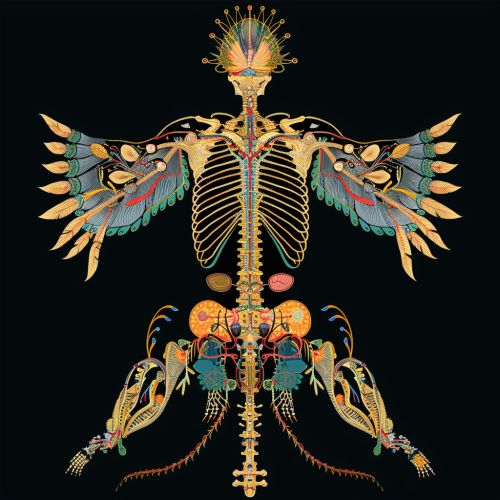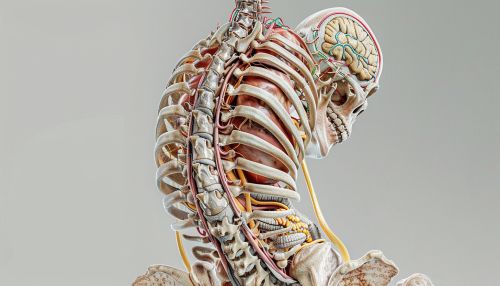Vertebrate
Introduction
Vertebrates are a large group of chordates, comprising animals with backbones or spinal columns. This group includes the most complex organisms on Earth, such as humans, as well as simpler life forms like fish. Vertebrates are distinguished by their vertebral column, and other advanced anatomical and physiological features. They are the most structurally complex and functionally sophisticated group of animals, and this sophistication is reflected in their diverse lifestyles and adaptations.
Anatomy and Physiology
Vertebrates possess a vertebral column in which the notochord found in the early embryonic stage is replaced by segmented vertebrae that enclose and protect the spinal cord. This spinal cord is part of the central nervous system, which also includes the brain. The central nervous system is one of the defining characteristics of vertebrates, allowing for coordinated movement, response to environmental stimuli, and other advanced functions.
Vertebrates also have a well-developed internal skeleton, including a skull to protect the brain. The skeleton provides structure, supports the body, and serves as an attachment point for muscles, allowing for movement. Vertebrates have a closed circulatory system, with blood pumped by a multi-chambered heart. The circulatory system carries oxygen, nutrients, and hormones to cells throughout the body and removes waste products.
The respiratory system of vertebrates varies depending on the species and its environment. Fish, for example, use gills to extract oxygen from water, while terrestrial vertebrates use lungs to extract oxygen from air. Some vertebrates, such as amphibians, can also respire through their skin.
Vertebrates have a digestive system with a mouth at one end and an anus at the other. Food travels through a series of specialized organs that include the esophagus, stomach, and intestines, where it is broken down and absorbed.


Classification
Vertebrates are classified into five major groups: fish, amphibians, reptiles, birds, and mammals. Each of these groups is further divided into many subgroups. The classification of vertebrates is based on their evolutionary relationships, which are determined by comparing physical and genetic characteristics.
Fish
Fish are the most diverse group of vertebrates, with over 30,000 known species. They are aquatic vertebrates that have gills throughout life and limbs in the form of fins. Fish are further divided into three main groups: jawless fish, cartilaginous fish, and bony fish.
Amphibians
Amphibians are a group of vertebrates that includes frogs, toads, salamanders, and newts. They are characterized by their life cycle, which involves a water-based larval stage followed by an adult terrestrial stage. Amphibians are ectothermic, meaning they rely on the environment to regulate their body temperature.
Reptiles
Reptiles, including turtles, lizards, snakes, crocodiles, and birds, are a diverse group of vertebrates. They are characterized by their scales, their ability to lay hard-shelled eggs, and their ectothermic metabolism.
Birds
Birds are a group of endothermic vertebrates characterized by feathers, toothless beaked jaws, a high metabolic rate, a four-chambered heart, and a strong yet lightweight skeleton. Birds lay hard-shelled eggs and have a unique respiratory system that includes air sacs.
Mammals
Mammals are a group of vertebrates with characteristics that include the presence of mammary glands which produce milk, a neocortex (a region of the brain), fur or hair, and three middle ear bones. Mammals are endothermic and have a high metabolic rate.
Evolution
Vertebrates originated approximately 525 million years ago during the Cambrian explosion, a period of rapid evolutionary development. The first vertebrates were simple, soft-bodied creatures resembling modern-day hagfish. Over millions of years, vertebrates evolved into the diverse group we see today. This evolution was driven by a variety of environmental factors, including changes in climate, geography, and ecological competition.
Ecology
Vertebrates play a wide variety of roles in their ecosystems. They can be predators, prey, or both. Some vertebrates are herbivores, eating only plants, while others are carnivores, eating only meat. Many are omnivores, eating both plants and meat. Vertebrates can also be decomposers, breaking down dead organic material and returning nutrients to the soil.
Vertebrates have complex interactions with other organisms in their ecosystems. They can be hosts for parasites, competitors for resources, or mutualists, forming beneficial relationships with other species. Vertebrates also have significant impacts on their environments. For example, they can alter the physical landscape through their activities, such as beavers building dams.
Conservation
Many vertebrate species are threatened by human activities, such as habitat destruction, pollution, overhunting, and climate change. Conservation efforts are underway to protect these species and their habitats. These efforts include establishing protected areas, regulating hunting and fishing, and breeding endangered species in captivity for release into the wild.
